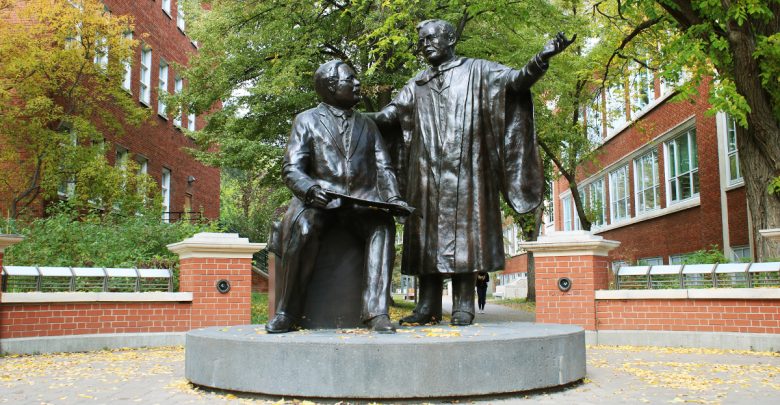 Vivian Lam
Vivian LamAs disappointing as it feels to watch your university slide down the international ranks, the University of Alberta’s descent is less concerning than one might think.
It was a sad day when British education analysis firm Quacquarelli Symonds (QS) released their 2019 World University Rankings, placing the U of A at 109th, nineteen spots down from its previous ranking of 90th. While this appears to be a drastic shift, we shouldn’t assume the U of A is falling off the ladder.
The decrease in ranking is likely more a result of other universities improving, rather than the U of A underperforming. If you compare the QS rankings from 2018 to the new 2019 rankings, you’ll see a lot of universities have shifted around; it wasn’t just the U of A that had a noticeable change in ranking.
If this change shows anything, it’s that the upper echelons of academia are supersaturated with high-quality institutions. The U of A moving nineteen ranks in one year likely means that it only takes a very small improvement factor to overcome other universities. The top one per cent of universities have just gotten so good; there’s only so much room for improvement when you reach the elite level.
That isn’t to say the U of A’s decrease in rank is only a result of other universities improving. QS reported that the U of A lost points in employer reputation and citations per faculty, which while disappointing, isn’t surprising. Earlier this year, the U of A underwent some controversial changes, including budget cuts and changes to the administration. This would inevitably decrease our reputation in the eyes of potential employers. A smaller budget might also have decreased our research output, and by extension, decreased citation per faculty.
Like corporate stocks, there are going to be high and low points of a university’s ranking; it’s unrealistic to expect that we’d be on an upward trend forever. Some years a university might put out a lot of important research and increase their rankings, and during other years, different universities might take the stage and move up instead. It’s also important to note that there are external factors that affect us as a public university, such as funding from the provincial government which can fluctuate from year-to-year.
In regards to the actual rankings, aiming for the top one hundred is more of a cognitive bias because we like to think in terms of a base ten number system. I think it would be better to rank universities using a letter-grade system, like what is done in video games. For example, S-rank (the highest rank) would denote extremely prestigious institutions like Harvard and MIT, roughly the top twenty schools in the world. An A-rank would denote elite universities on the cutting edge of teaching and research, ranging somewhere around the top 100-200 schools. Many of the large Canadian universities, the U of A included, would fall somewhere in the A ranking. This is a better way to gauge where a university sits in the grand scheme of academic institutions.
Numbered rankings are still useful to compare individual institutions at the elite level, but it’s important not to get too hung up on them. But maybe that’s just the bias of a student whose university just dropped nineteen ranks…
Don’t worry UAlberta, you’ll always be number one in my heart.




